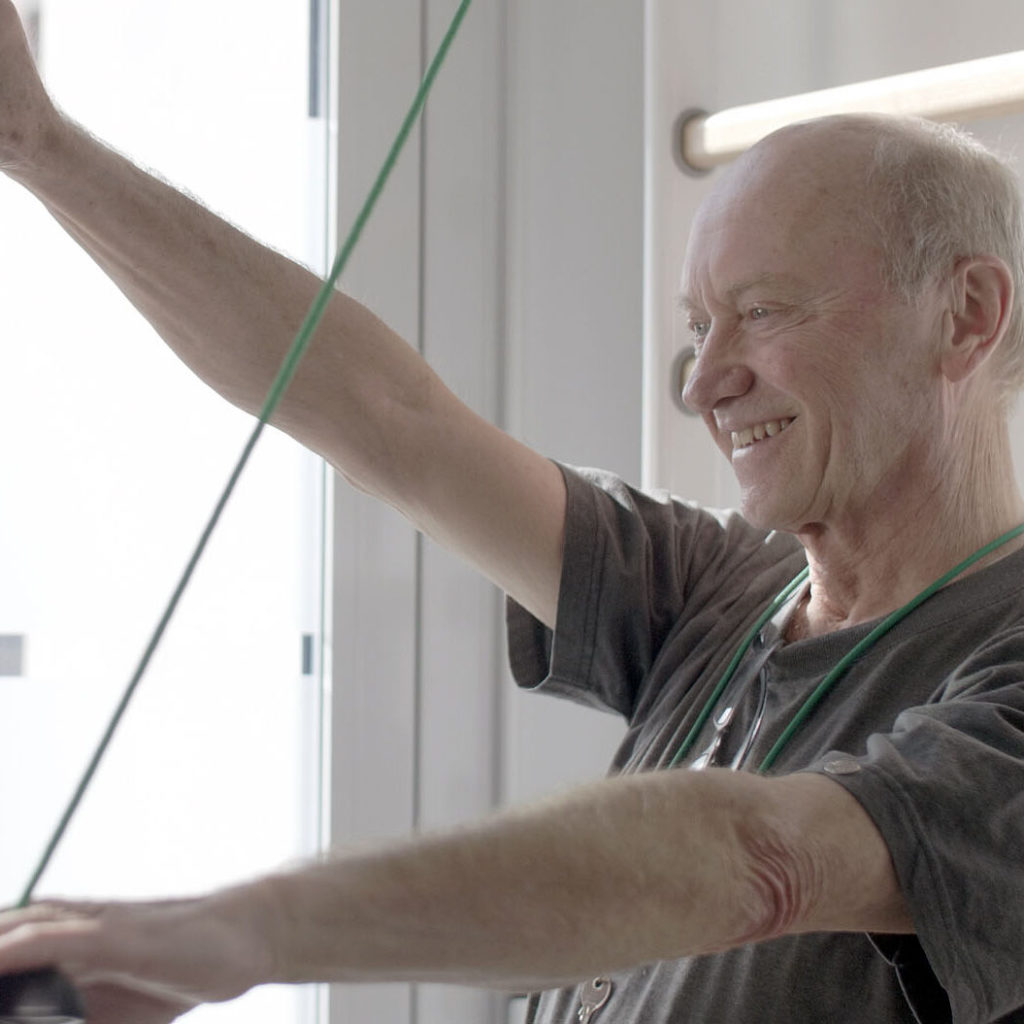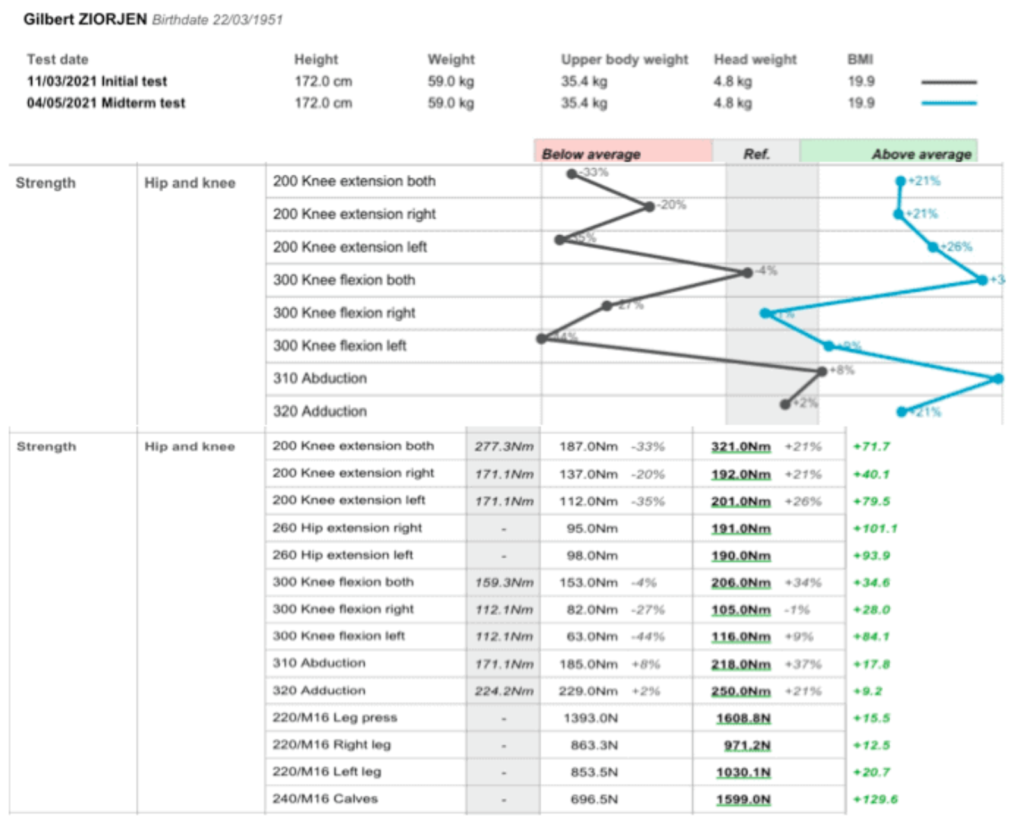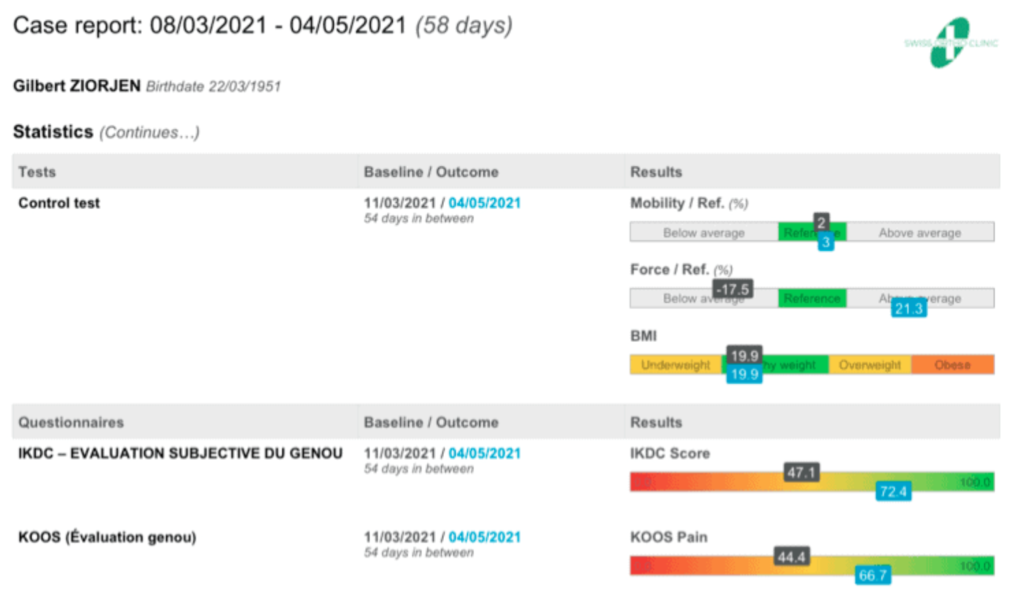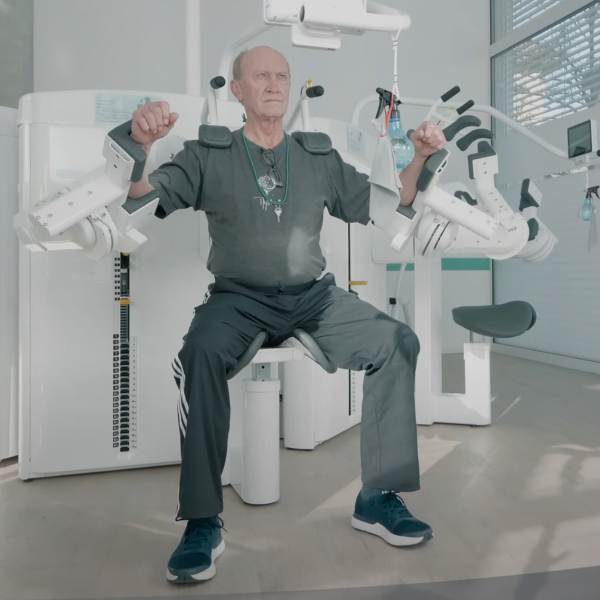
Thanks to advances in various technologies, there has been a paradigm shift. Muscle strengthening is taking on a new dimension in the treatment of the vast majority of musculoskeletal disorders.
Developing and maintaining good musculature is extremely important for your ability to move physically. Your strength is obviously the source of movement. Good musculature also contributes to joint stability and shock absorption.
Did you know that a progressive decline in muscle strength has also been documented from the age of 35 to 40? This can increase the risk of injury, falls and early wear and tear in our joints. What’s more, our increasingly sedentary lifestyles aren’t helping! The good news is that muscle strength and mass can be regained at any age, with a therapeutic effect for a wide range of conditions!
This is not a new concept: Aristotle was already prescribing muscle strengthening! The legend of Milon of Crotone is an excellent illustration of the therapeutic application of muscle strengthening.
Milon was a 6th-century Greek athlete who strengthened his muscles by progressively dosing the load. He would take a newborn calf on his shoulders and walk around the village every day. The more weight the animal gained, the greater Milon’s strength and muscle mass. After a while, he was able to carry a bull weighing over 350 kilos on his shoulders! This legendary training is the origin of the Greek proverb “whoever has carried a calf well, can also carry a bull” (Quae tulerit vitulum, illa potest et tollere taurum).
You’re often faced with a number of difficulties in achieving muscle strengthening, including: ongoing motivation, quality of movement, respect for biomechanics and documentation of evolution.
It’s hard to get Milon’s motivation to strengthen your muscles. This is particularly true for non-athletes who also suffer from joint and muscle pain as a result of incipient osteoarthritis, meniscus damage or other musculoskeletal disorders.
Thanks to our intelligent machines, our therapists can measure your range of motion and initial strength. They establish a personalized protocol for progressive, pain-free muscle re-education, combined with manual and functional therapy where necessary.
In a playful way, you perform quality movements with precise control of speed and amplitude, enabling you to gain muscle without realizing it.
A CLINICAL EXAMPLE
Mr Ziorjen, whom we thank for agreeing to share his medical information with you, is a very physically active 70-year-old patient. He regularly skis, cross-country skis and hikes in the mountains. He presents with a degenerative meniscal lesion and significant muscle weakness that he had not suspected.
Isometric strength tests highlighted the muscle weakness and the significant imbalance between the left and right sides and between the flexor and extensor muscle groups. Mr. Ziorjen was very surprised.
Indeed, given the amount of exercise he used to do, he hadn’t expected it! The fact that he was able to demonstrate to the patient the presence of this weakness motivated him to carry out serious and more targeted muscle strengthening work. The absence of pain during exercise, thanks to the control exerted by the machines, reassured him and enabled him to make effective progress.

You can see how he improved his strength from 9% to 129% depending on the muscle group!
As far as the doctor was concerned, the report confirmed that the patient had completed all his rehabilitation sessions, and that the exercises performed had been of a high quality, with compliance in excess of 80%.
Questionnaires such as IKDC and KOOS are used to document progress.

Only a targeted protocol accompanied by personalized technological follow-up can guarantee a scientifically proven return.
This is what we call Exertherapy: personalized therapy through controlled movement.
Muscle re-education is therefore no miracle cure, but it is ideal for a large number of musculoskeletal disorders as an exclusive treatment, and in some cases as a complement to surgical treatment.
It is useful to know that degenerative meniscus lesions may not progress well with surgical treatment. Arthroscopy and partial resection of the meniscus are only indicated if conservative treatment fails and there are clinical signs of pain of mechanical origin.
